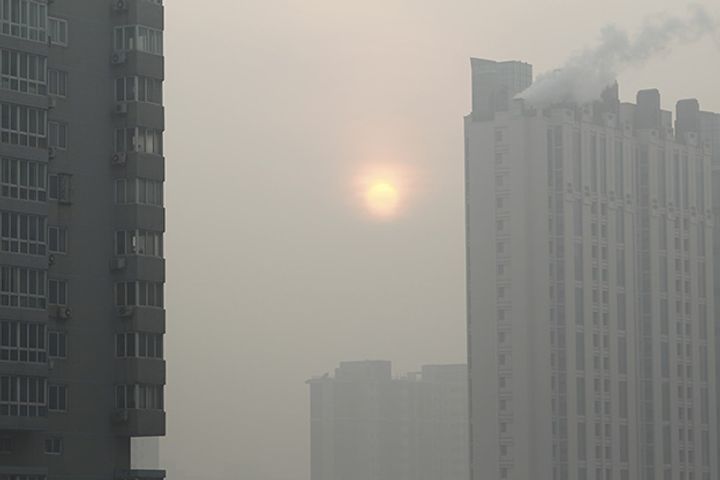 PM2.5 Pollution in China's Cities Kills, Takes 1.5% Bite out of Annual GDP
PM2.5 Pollution in China's Cities Kills, Takes 1.5% Bite out of Annual GDP(Yicai Global) Aug. 14 -- Acceleration of industrialization and urbanization are inflicting deteriorating air quality on China, with smoggy weather ever more frequent. This has significantly harmed public health and social and economic development.
PM2.5 pollution not only caused the early death and illness of 3.53 percent of urban residents, but also economic losses of up to CNY570.6 billion in 2015, a recent study shows.
PM 2.5 is airborne particulate matter of 2.5 microns or less that come from many sources, such as wind-blown dust, coal soot from power plants and home heating, car exhaust, and plant pollen, public information shows.
It brought about the untimely deaths of 125,100 individuals and made 10,095,900 people ill or visit clinics or hospitals in 2015, about 3.5 percent of the total population in these cities' downtown areas, a research report found after analyzing 62 cities, a paper appearing in the latest issue of China's authoritative environmental sciences periodical Environmental Science shows.
The fine smog also generated up to CNY571 million (USD83 million) in economic losses, 1.5 percent of the total annual GDP of these cities, with an annual economic loss per capita of CNY1,970 (USD286).
Environmental epidemiological and toxicologic studies demonstrate that long- or short-term exposure to pollutants, particularly heavily-polluted air, causes respiratory, cardiovascular, nervous and immune system diseases, as well as variations or damage to chromosomes and DNA. A significant positive correlation between air pollution and cancer, birth defects and early death is also apparent.
PM2.5 has the most significant adverse impact on people's health of all air pollutants.
The city with the highest health risk is Beijing, followed by Shanghai. Other cities ranked in the top 10 for health risks are Tianjin, Chongqing, Wuhan, Chengdu, Zhengzhou, Jinan, Nanjing and Shijiazhuang.
The result also closely correlates to the aging populations in these cities, which has become an extremely serious problem. Since the elderly are more vulnerable to PM2.5 pollutants, they face a higher probability of death and illness.
The research also found that East China has the largest population exposed to pollutants and suffers the greatest economic losses -- up to CNY377.8 billion. In contrast, the concentration of PM2.5 in Central China is at the top of the ranking, while the incidence of respiratory diseases in West China is far higher than East and Central China, where the proportion of pollution-related economic losses to its GDP is up to 2.37 percent, the highest figure nationwide.
The population exposed to pollutants in South China is far more than in the North, while the PM2.5 concentration in the latter is one and a half times that of the former.
The incidence of early death, hospitalization, outpatient and illness in North China is higher overall than in the South, and the proportion of pollution-related economic losses to GDP as well as the per capita loss of North China are 1.65 fold and 1.61 fold those of South China, respectively.
Editor: Ben Armour